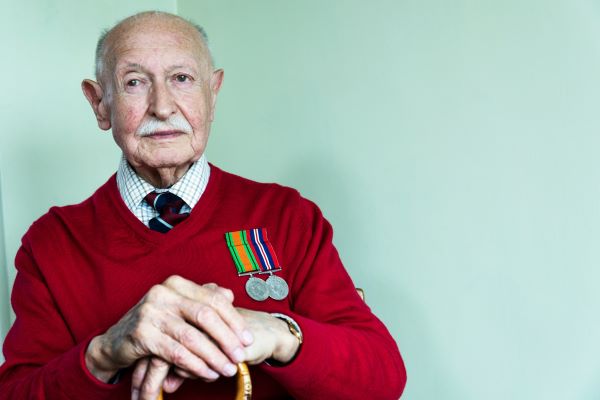Assisted living communities can be a great place for people to spend their senior years. They offer relief from the maintenance of a home, as much or as little daily assistance as you need, and a vibrant, social environment that gives residents access to making new friends, and enjoying new or old hobbies. However, the monthly price tag can leave families thinking that it may be out of reach financially. But, for military veterans and surviving spouses, there is a benefit available that can substantially offset the cost of assisted living. Called the Aid and Attendance benefit, it is available to eligible military veterans, and surviving spouses. Aid and Attendance qualifications Aid and Attendance is paid to veterans, and surviving spouses, who are eligible for Veterans Pension. Aid and Attendance is a supplemental benefit paid in addition to the pension. There are three main circumstances that qualify veterans for the Aid and Attendance benefit. The circumstance of relevance to veterans or surviving spouses who are seeking financial support for assisted living is the need of another person “to perform personal functions required in everyday living, such as bathing, feeding, dressing, attending to the wants of nature, adjusting prosthetic devices or protecting yourself from the hazards of your daily environment.” Veterans and surviving spouses can apply for the Aid and Attendance benefit through their regional Pension Management Center. To qualify, an application is submitted, along with various personal documents to substantiate personal income, assets and medical expenses. Surviving spouses will also need a copy of their marriage certificate and their spouse’s death certificate. Applicants include medical evidence, such as a detailed doctor’s report, to document the need for the additional benefit. The report should include a description of the applicant’s condition that keeps him or her from being self-sufficient in daily living. Qualifying for Veterans Pension To get the Aid and Attendance benefit, applicants must first qualify for the Veterans Pension, which is open to veterans and surviving spouses who are 65 or older. However, there are exceptions for those who are permanently disabled or receiving skilled nursing care, Social Security Disability Insurance or Supplemental Security Income. The applicant must be considered a wartime veteran or the spouse of a wartime veteran, which generally means they have had 90 days of active-duty service and at least one day of service during a time of war. Aid and Attendance Tax Benefits The purpose of the Aid and Attendance benefit is to help veterans and their spouses pay for the assistance they need to perform the activities of daily living. However, the benefit is paid as a tax-free supplement to the monthly Veterans Benefit check. There are no reimbursement requirements as there are with other government medical programs, such as Flexible Spending Accounts. Aid and Attendance amount Veterans Pension is a need-based benefit, and each year Congress sets income limits for the program. Veterans who meet all the qualifications for Veterans Pension except for income might still qualify for Aid and Attendance. The Veterans Pension guarantees a minimum income level for veterans and spouses. The amount of the monthly pension check is reduced by the amount of a person’s household income. The Aid and Attendance benefit increases the minimum monthly income amount, making people eligible to receive all or a portion of the Aid and Attendance benefit who would otherwise earn too much to receive any of their Veterans Pension benefit. Veterans can apply for Veterans Pension by contacting their regional Pension Management Center. The amount of the Aid and Assistance benefit varies based on whether the applicant is a veteran or surviving spouse and whether he or she has any dependents. The amount of the benefit is decreased by the amount of the applicant’s household income. The maximum benefit for veterans who qualify for Aid and Attendance starts at nearly $22,000 a year, nearly $9,000 more than the base Veterans Pension. The maximum benefit for surviving spouses start at just over $14,000 a year, more than $5,000 more than the base pension. The maximum benefit for married couples who are both veterans in need of Aid and Assistance is nearly $35,000, almost $18,000 more than the base pension. For families making financial decisions about what kind of care they can manage for their elderly loved ones, Aid and Attendance can make the difference between getting the kind of care they need or merely the care they can afford.
How Can Veterans Benefits Pay for Assisted Living?

